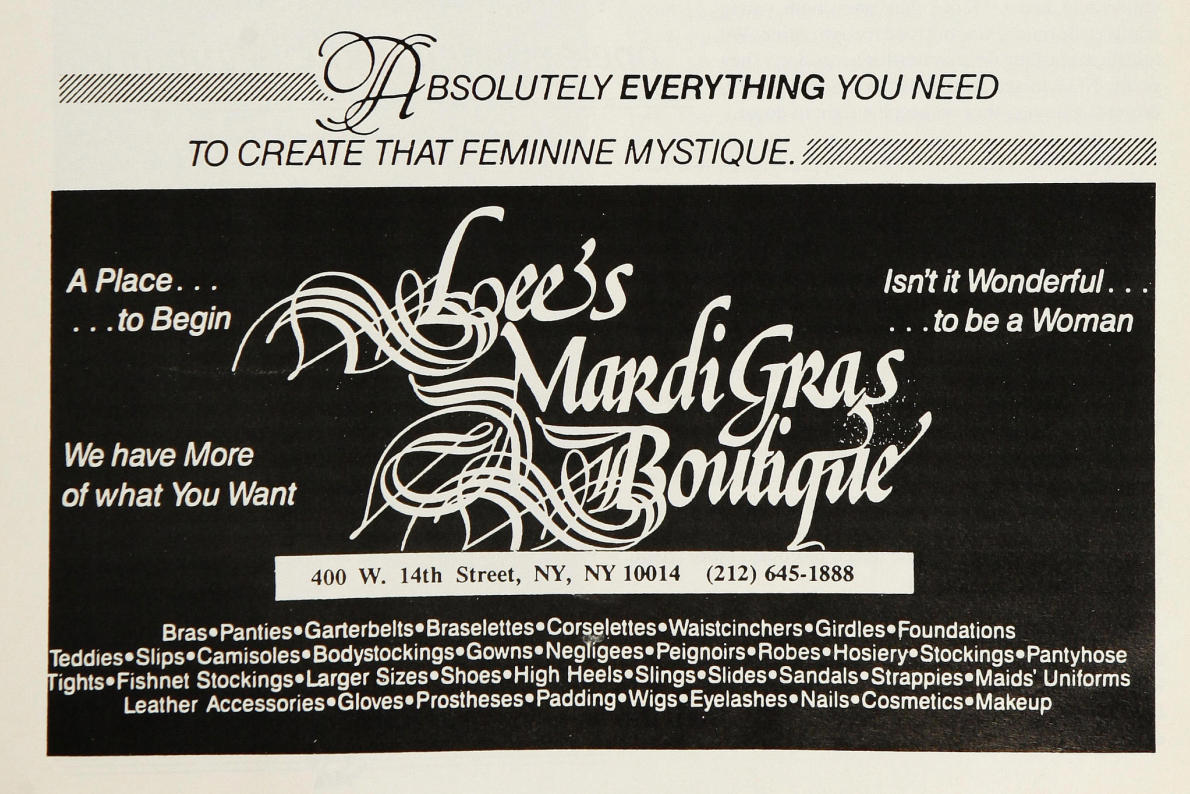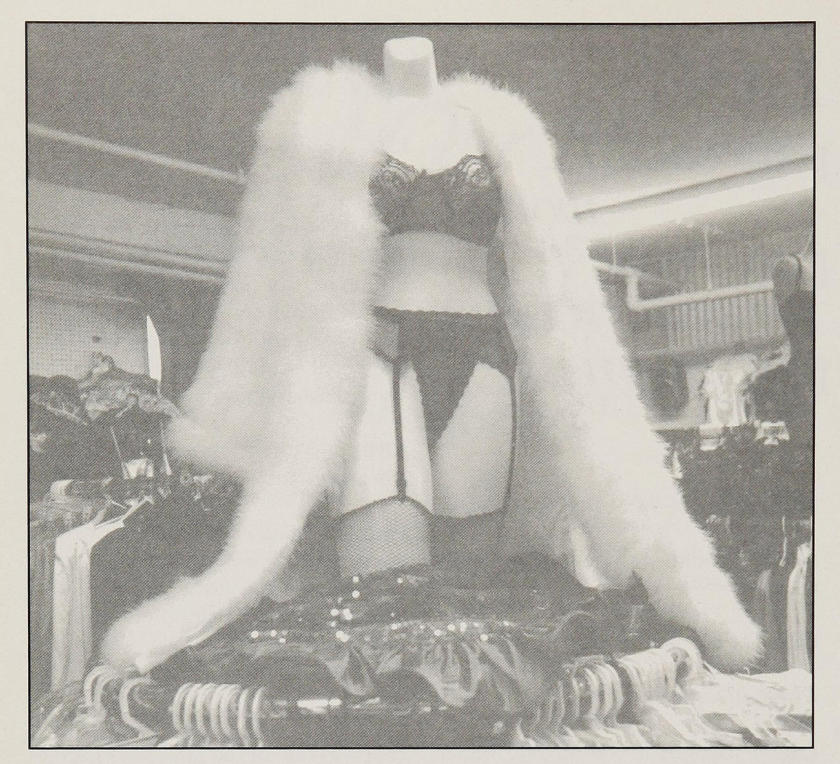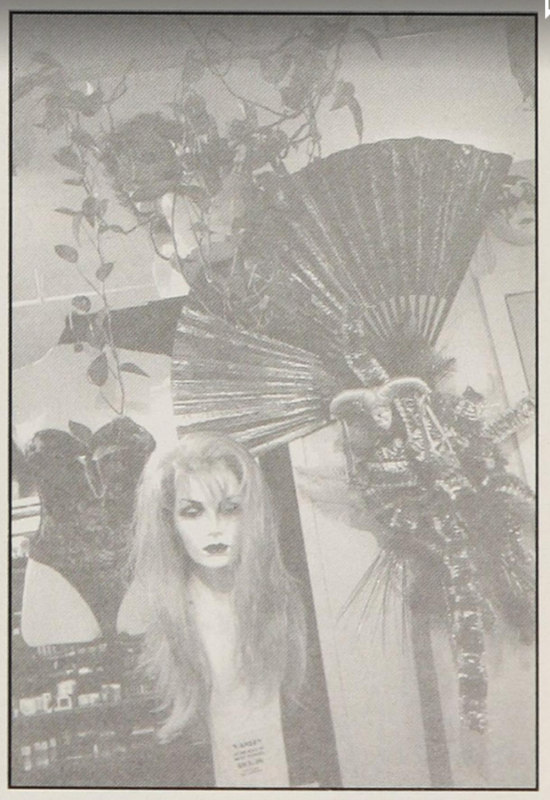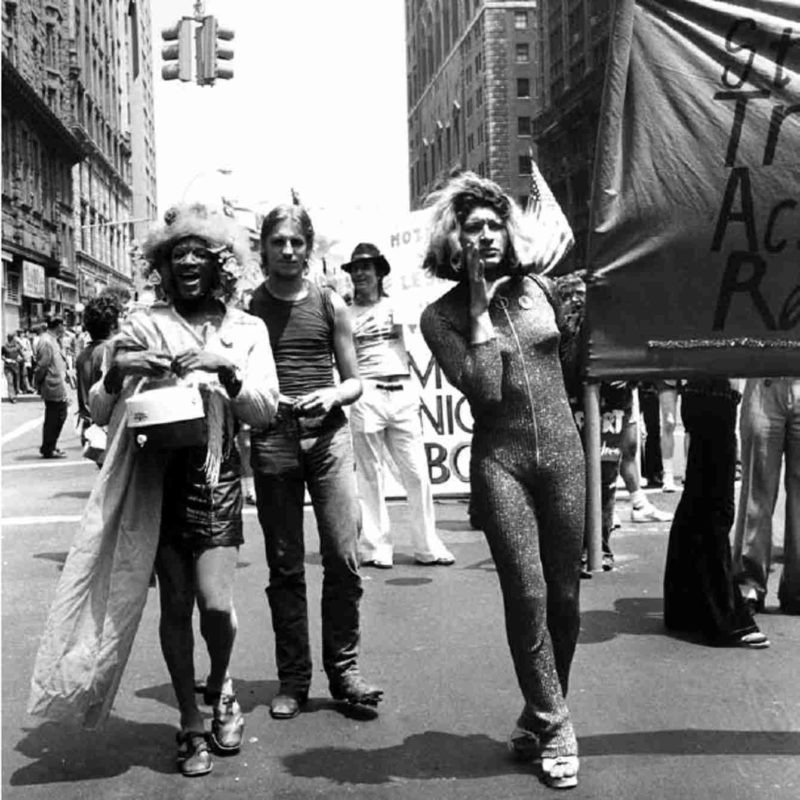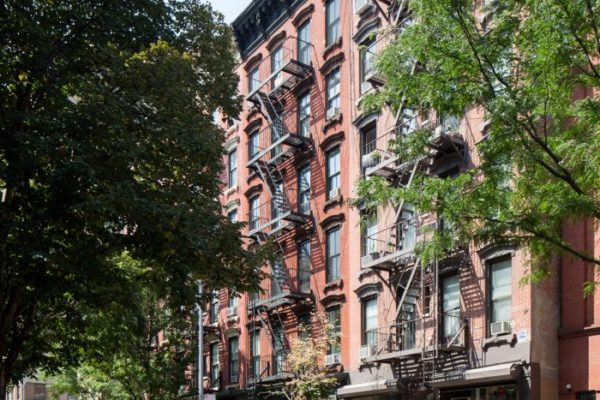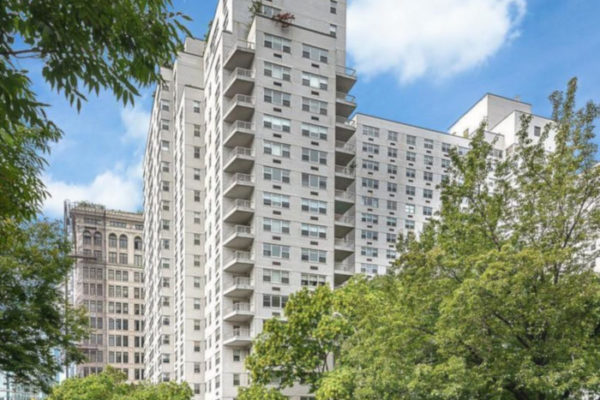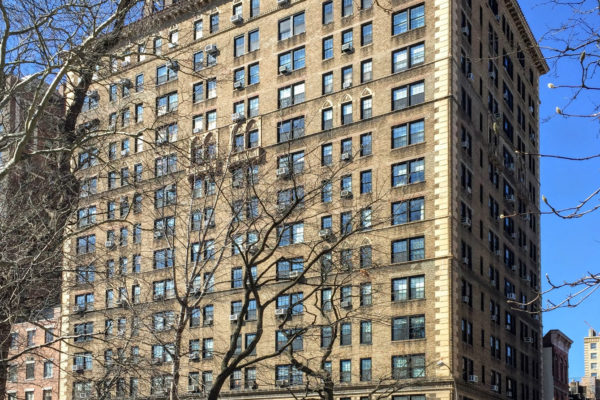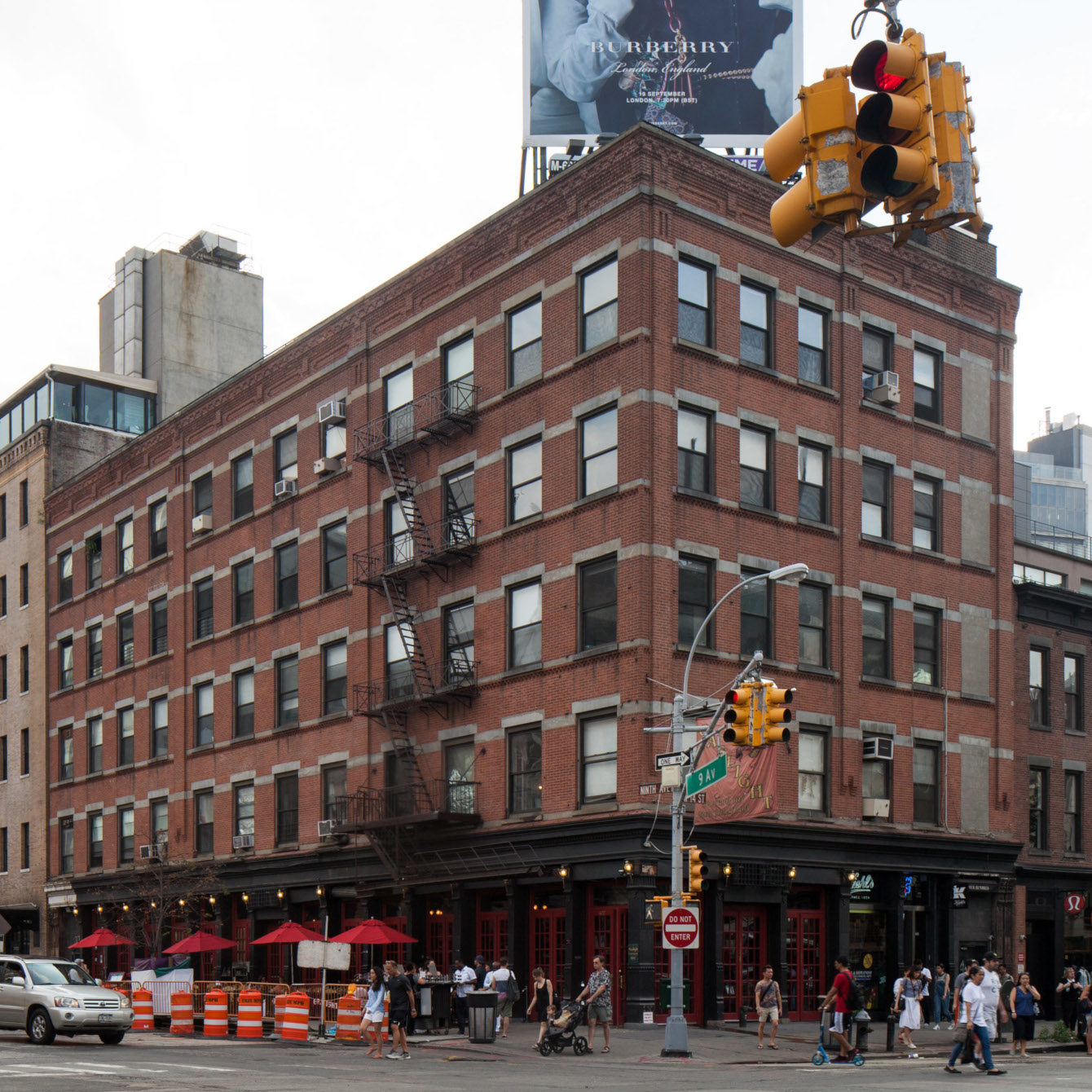
Lee G. Brewster’s Mardi Gras Boutique
overview
The Mardi Gras Boutique was located on the second story of this building in the Meatpacking District from 1989 to 2000. Founded by Lee G. Brewster, an early trans activist and entrepreneur, the store sought to provide a welcoming and affirmative space for trans and gender variant customers.
Brewster saw the Mardi Gras not merely as a retail operation, but as a vehicle to further acceptance of gender variant people, and in addition to clothing and accessories, the boutique also carried a variety of informational literature.
See West Side Discussion Group Center for more information on this site’s LGBT history.
On the Map
VIEW The Full MapHistory
From 1989 to 2000, 400 West 14th Street was home to Lee G. Brewster’s Mardi Gras Boutique, a 5,000-square-foot “superstore” that catered to the transgender and drag communities. Brewster, an early trans activist and founder of the organization Queens Liberation Front and Drag magazine, began what became the Mardi Gras in 1969 as a mail order business for transsexuals, transvestites, drag queens, and other gender variant people that he operated from his apartment.
By the late 1970s, demand was so great that Brewster opened a physical store on the second story of 565 Tenth Avenue in Hell’s Kitchen. He later moved the store to the second floor of 400 West 42nd Street before moving to a larger space at 400 West 14th Street in 1989. The Mardi Gras sold clothing, shoes, accessories, wigs, makeup, and a variety of books and publications on transgender topics. Brewster was adamant that the store not be located on the ground floor as a way to protect and provide privacy to his customer base. He alleged that he had to take the Village Voice to court to get them to run the boutique’s ad.
Donna Cartwright, in an obituary for Brewster that appeared in Transgender Tapestry magazine, recounted a trip to the Mardi Gras:
“If you’ve never visited the store, it’s really hard to imagine the location. It’s… in the Meatpacking District of the city, in, to put it mildly, not an upscale neighborhood. When Barbara [Cartwright’s friend] and I found it we were faced with a black metal door and a voice phone. We buzzed, and after explaining our business were admitted into an elevator that, I swear, took Abraham Lincoln upstairs. I was very nervous. Never in my life had I had the freedom to shop. Never had I been able to peruse racks of clothing, pull them out, try them on, discard them, and move on to the next. I had never been able to stand in front of a mirror and get the opinion of a salesperson… I was ready to shop.”
Cartwright further described the interior of the shop as follows:
“To my delight, the store was even larger than I expected. In my memory it had rows of racks with dresses, blouses and skirts, and limitless bins filled with bras, panties, garter belts, and other goodies… It was nothing short of wonderful. I spent a couple of hundred dollars, but tried on at least two thousand dollars worth. In the middle of it all, I met Lee herself and told her how much her shop meant to everyone. The day was a dream come true.”
In addition to providing an affirming space for ordinary trans customers, in later years, as the boutique grew in reputation, it was frequented by well-known drag queens, like Lady Bunny, and sold clothes to costume designers for movies such as To Wong Foo, Thanks For Everything! Julie Newmar (1995).
The Mardi Gras Boutique permanently closed in 2000 following Brewster’s death at age 57 from cancer.
During the time the Mardi Gras Boutique occupied 400 West 14th Street, the building was also home to the gay bars Locker Room (1990), Magic Garbage Can, Mike’s Bar (1993), and The Toilet.
See West Side Discussion Group Center for more information on this site’s LGBT history.
Entry by Jeffry Iovannone, project consultant (August 2022).
NOTE: Names above in bold indicate LGBT people.
Building Information
- Architect or Builder: Joseph M. Dunn
- Year Built: 1886
Sources
Abby Saypen, “A Little Bit of Our History: An Interview with Lee Brewster,” TV-TS Tapestry, January 1995.
Donna Cartwright, “Lee G. Brewster Obituary,” Transgender Tapestry, No. 91, Fall 2000.
Douglas Martin, “Lee Brewster, 57, Style Guru for World’s Cross-Dressers,” The New York Times, May 24, 2000.
“Lee Brewster Obituary,” The Washington Blade, June 9, 2000.
Rick Owens, email to NYC LGBT Historic Sites Project, August 31, 2022.
Do you have more information about this site?
This project is enriched by your participation! Do you have your own images of this site? Or a story to share? Would you like to suggest a different historic site?
